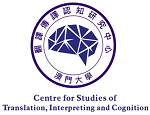| Attachment | Size |
|---|---|
| 836.85 KB |
En este estudio investigamos correlatos electrofisiológicos del procesamiento léxico experto. Para ello, medimos modulaciones cerebrales oscilatorias en intérpretes simultáneos durante tareas de lectura y traducción en su lengua nativa (L1) y su lengua extranjera (L2). En comparación con bilingües no intérpretes, estos profesionales demuestran mayor potencia en la banda delta-theta (1-8 Hz) en todas las tareas, con mayor velocidad de procesamiento sólo en las de traducción y asociaciones entre dichos efectos sólo para la dirección de traducción más ejercitada en su práctica cotidiana (de L2 a L1). Así, parece que los efectos de la experiencia en interpretación son más marcados y sistemáticos para aquellos dominios que más exigencias enfrentan durante la práctica profesional.
Insights on the neurocognitive particularities of expert individuals have benefited from language studies on professional simultaneous interpreters (PSIs). Accruing research indicates that behavioral advantages in this population are restricted to those skills that are directly taxed during professional practice (e.g., translation as opposed to reading), but little is known about the neural signatures of such selective effects. To illuminate the issue, we recruited 17 PSIs and 15 non-interpreter bilinguals and compared behavioral and electrophysiological markers of word reading and translation from and into their native and non-native languages (L1 and L2, respectively). PSIs exhibited greater delta-theta (1–8 Hz) power across all tasks over varying topographies, but these were accompanied by faster performance only in the case of translation conditions. Moreover, neural differences in PSIs were most marked for L2-L1 translation (the dominant interpreting direction in their market), which exhibited maximally widespread modulations that selectively correlated with behavioral outcomes. Taken together, our results suggest that interpreting experience involves distinct neural signatures across reading and translation mechanisms, but that these are systematically related with processing efficiency only in domains that face elevated demands during everyday practice (i.e., L2-L1 translation). These findings can inform models of simultaneous interpreting, in particular, and expert cognitive processing, in general.










































